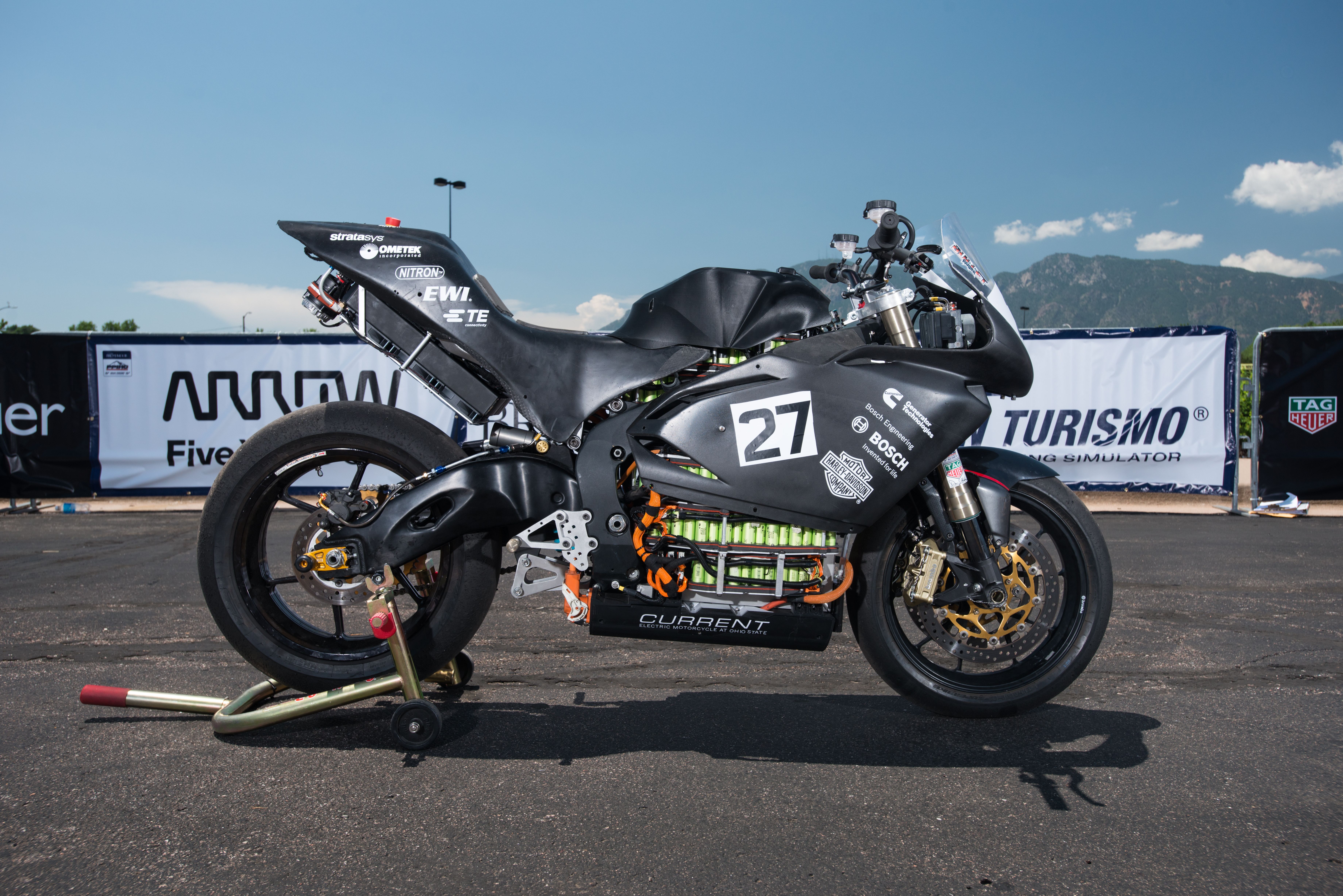High-Speed Classroom: Building an Electric Racing Motorcycle
Racing e-motorcycles with the pros provides the ultimate proving ground for engineering students

Ohio State University’s Buckeye Current Electric Motorcycle Team is no ordinary after school club. Unless, of course, your version of ordinary includes breaking land speed records at the Bonneville Salt Flats and taking home racing trophies from the Isle of Man. In about six years, this all-student team has gone from cobbling motorcycles together from whatever they had on hand to competing against professional motorcycle racing teams on some of the world’s toughest courses.
The challenge of building an entirely new electric motorcycle from scratch has turned out to be a fantastic testing ground for these soon-to-be minted electrical engineers.
“People come to the team with no engineering experience and take on some of the biggest challenges there are in engineering today,” says Polina Brodsky, now pursuing a graduate degree in engineering at Ohio State. Brodsky joined the team as a high school senior and says she’s watched it blossom in the short time she’s been involved.
Recently, Buckeye Current set their sights on a new challenge: a race to the clouds at the Pikes Peak International Hill Climb. The race course ascends up a mountain to 4,300 meters above sea level, meaning the Ohio State team needed to completely overhaul its bike design in order to compete.
“It was so exciting to come out here and do something completely brand new—that we had no exposure to at all—and kind of figure out what it takes to build that kind of bike,” says Brodsky.
The course’s sharp switchbacks and elevations changes demand a vehicle that’s agile and nimble, able to accelerate quickly out of turns. But the steep elevation gain and thin air at the summit actually give electric motorcycles an advantage over traditional internal combustion engines, because its batteries don’t rely on oxygen.
“It’s great place to show off,” says team leader Aaron Bonnell-Kangas. “So why not come here and show off a competitive vehicle that’s pushing towards what we all think is our dream bike?”
So they built the bike from the ground up with sensors that monitor every aspect of the motorcycle’s performance.
“It’s almost like writing code,” says Bonnell-Kangas. “In fact some of the most important tuning we do is on laptops. It’s pretty incredible, the performance you can get out of it.”
Bonnell-Kangas says working with Buckeye Current has taught him crucial skills like managing complex projects and rapid prototyping—and in this year’s race at Pikes Peak, those skills were put to the ultimate test. On the final qualifying day just before the competition, a critical part of the bike’s power train—the motor controller—failed. Suddenly, the team was in absolute crisis. If they couldn’t improvise a solution in 24 hours, an entire year’s work would be completely shot.
Fortunately, the team was able to trace the problem to two fuses that had burned out, and managed to get the bike in working order in time to take third place in the next day’s race.
“I said at the time this is the fun part,” says Bonnell-Kangas. “It’s the moments when it all falls on you. It’s truly a test of yourself, your knowledge and skills. And the measure of that is obvious: It’s whether or not it works.”
Philip E. Ross is a senior editor at IEEE Spectrum. His interests include transportation, energy storage, AI, and the economic aspects of technology. He has a master's degree in international affairs from Columbia University and another, in journalism, from the University of Michigan.